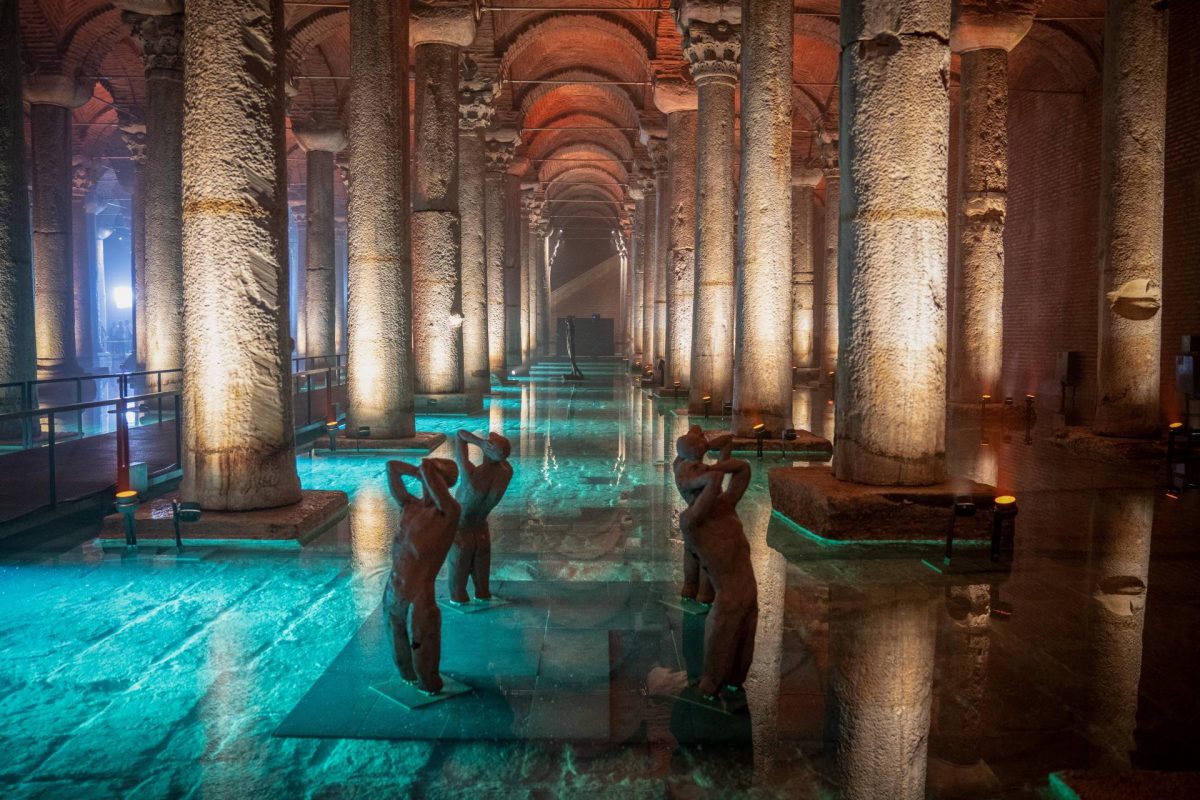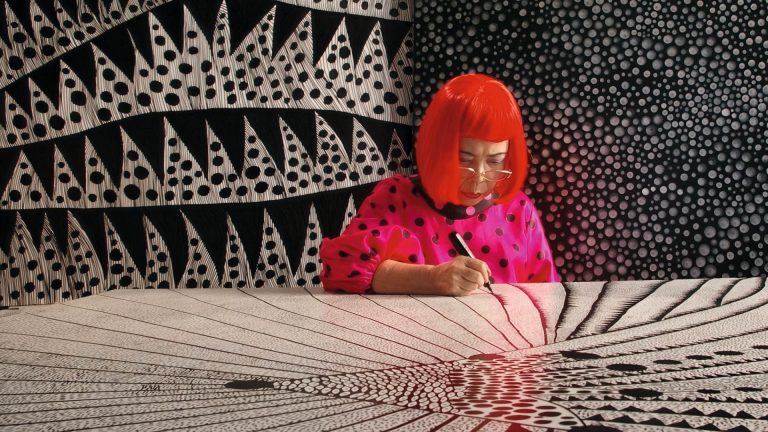The whole of October witnesses Istanbul Biennial of Contemporary Art. Dozens of venues introduce the most pertinent projects from all over the world. The cultural capital of Turkey undergoes active renewal due to arts and is becoming more and more attractive.
Monuments of Byzantium and the Ottoman Empire lure to Istanbul millions of tourists. Istanbul authorities energize the new trend – remarkable art events are held here almost every month. One of the main events among them is Istanbul Biennial of Contemporary Art, the 17th this autumn. Hence, we invite you to roam the ancient city, admiring the companionship of modern artists.
Modern Antiquities
If you want to look at the most impressive alliance of ancient and modern art, you would like to come down to the famous Basilica Cistern. In fact, it is the water storage reservoir of the 6th century and therefore, it enters the list of the city’s must see. After a long and costly restoration the Cistern reopened this year. And if previously, the main attraction for the tourists were light shows, now the focus shifts towards arts – sculpture as well as architecture. The Turkish sculptors have created over half a dozen of figures and objects. Here you may look at «Medusa» by Ali Abilu (the head of the Gorgon Medusa can be seen on ancient colomns), «Alaring Information» by Ozan Unal, «Solitude»by Mussafer Tunzhar and the other similarly expressive images.
One more museum of antiquities has completely transformed this year. Pera Museum (Pera, an ancient district of Istanbul, adjacent to İstiklal Avenue), is located in the historical building of Bristol hotel (built in 1893). The museum features artworks, perceived as exotic Orientalism in the XIX century. The superb collection of paintings portraying Turkish icons (the most popular painting being «The Tortoise Trainer»), and the most amazing ceramics. Now the three floors accommodate installations of contemporary artists. All in all, they bring the current issue of feminism, national conflicts and, surely, environmental problems. The museum is certainly worth visiting and exploring the two works of art – the video «White House» by the highly renowned painter of Afghanistan Lida Abdul and the installation «Insecure», depicting violence and vulnerability by the most prominent Turkish art celebrity Gulsun Karamustafa.
Astounding Venues
Since the very beginning Istanbul Biennale revealed the astounding nature of the city. The curators competed in their choices of remarkable venues for the exhibitions. And it seems the exhibitions are located all over the city: in mosques, in underground cisterns, in coffee shops, in wooden palaces, in banks and madrasahs. But Istanbul is so huge and diverse, that again and again it awes by its miraculous treasures.
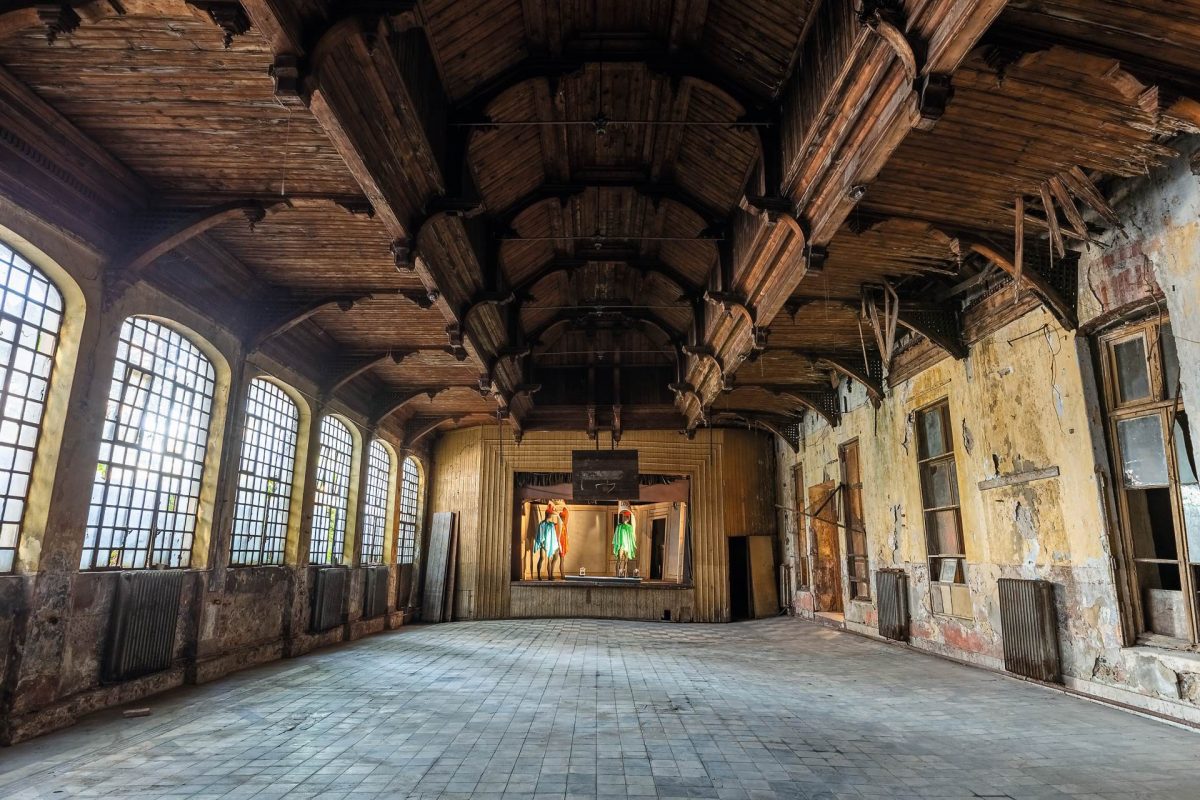
This year water power has come to the fore. The major space for water projects are hammams, ancient public saunas. Turkish hammams are not designated just for hygiene; they are virtually sacred places, vital for the most significant moments in human life. So hammam architecture reminds in construction of basilicas with their domes and alters. You might get to know it all in the huge Hammam Museum (with free entrance) in the giant bath house complex Beyazıt Hamamı.
This year has witnessed the reopening of two hammam masterpieces. Both of them are located in the outer reaches of the historical part of the city and are not very easy to find. The first one Kucuk Mustafa Pasha Hamami (XV century) is by far the most ancient in Istanbul with its amazing labyrinths leading from washing to bathing halls. The main hall contains the sound installation Whispering Playground by Tarek Atoul. The bass tones, recorded in the Istanbul haven, add to the dropping and flowing sounds of water. The effect arouses a feeling that hammam is breathing, whispering and crying, plunging the visitors in a trancelike state.
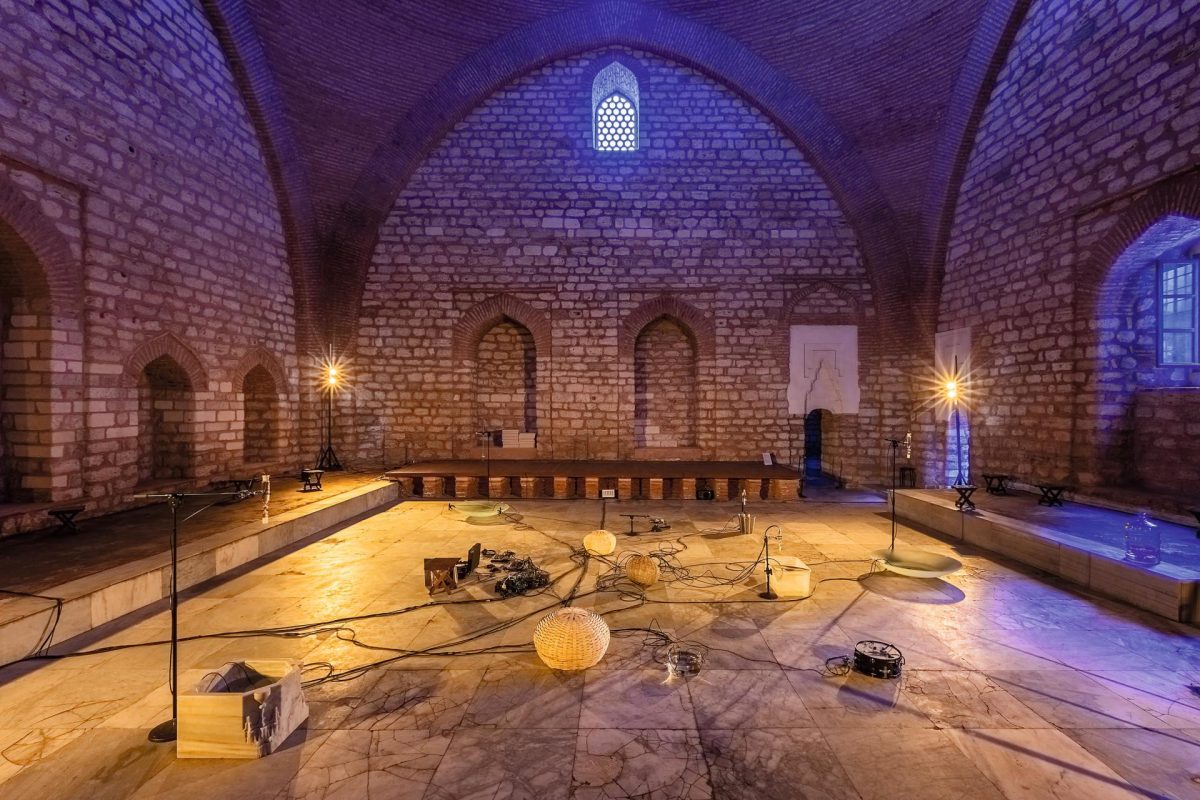
A ten-minute walk from Mustafa Pasha Hammam will take you to the luxurious baths, built in the Golden Age of Sultan Suleiman. The bath complex Cinili Hamam retains murals of the XVI century in Persian style. Today all the interiors are restored, with the use of the most expensive Peloponnese marble. Another hammam museum is expected to open soon but now all the snow-white space of the palace is occupied by the work of the Italian artist Renato Leotta, named «Concertino for the Sea». Renato researches changes of the Mediterranean Sea bed for several years. He has compiled a huge collection seaweeds and has recorded the sounds of the sea bed. In collaboration with the composer Federico Bisozzi he translated archive records into concert pieces, sounding in different parts of the hammam.
It is really exciting to discover one more undisclosed location, worth visiting. In the cross streets of the historical district Sultanahmet you may find out the calligraphic Barin Han Studio. It began as a kind of a club, reviving in new forms ancient calligraphic art. On the six floors of the building you can see the most radical Biennale exhibitions. On the ground floor visitors can buy a calligraphic sheet, inscribed by one of calligraphers working here.
Places of Power
Being one of the most dynamic cities of the world, Istanbul declares its new art venues every coming year. Unfortunately, the Museum of modern Art is closed for restoration now, the museum which attracted visitors not only by its installations, but by the beautiful view of Bosporus (though a good alternative is the neighboring center PeraPort).
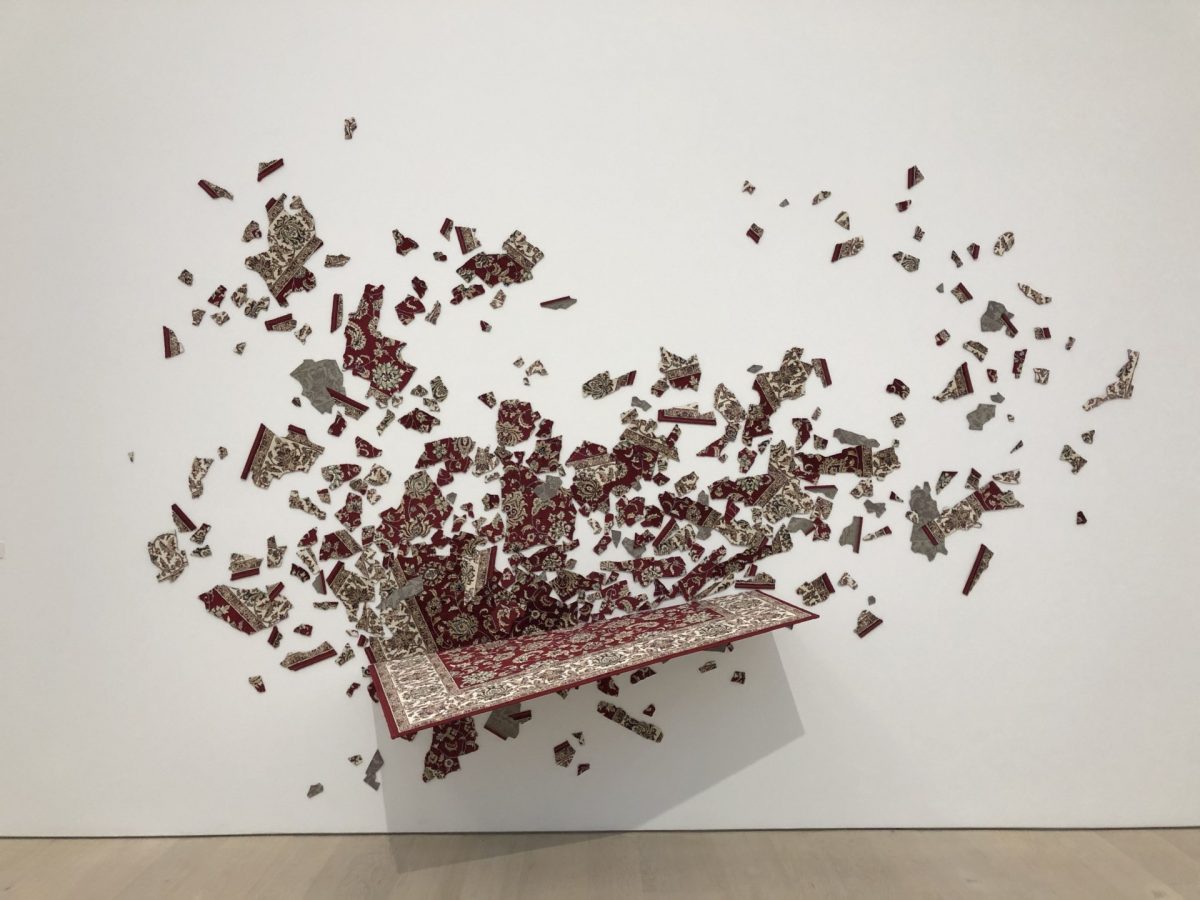
The huge art center Arter opened during the previous Biennial and turned into one of the most fashionable places in Istanbul. Everything here exposes contrasts – the modern construction stands out against the adjoining streets with their flimsy dwellings. Six vast floors with exhibitions, Divan restaurant of author’s cuisine and a wonderful view from the terrace. Here they introduce the major projects of the city, at the moment, for instance, the ones dedicated to rationale of «a native place» «Locus Solus», or sleep as a phenomenon «Rounded by Sleep».
Another Biennial venue is the former electric power station and gas reserve in Karakoy district now called «the Turkish Tate Modern». The priority here is large-scale industrial installations. The former workshops of the electric power station host several restaurants.
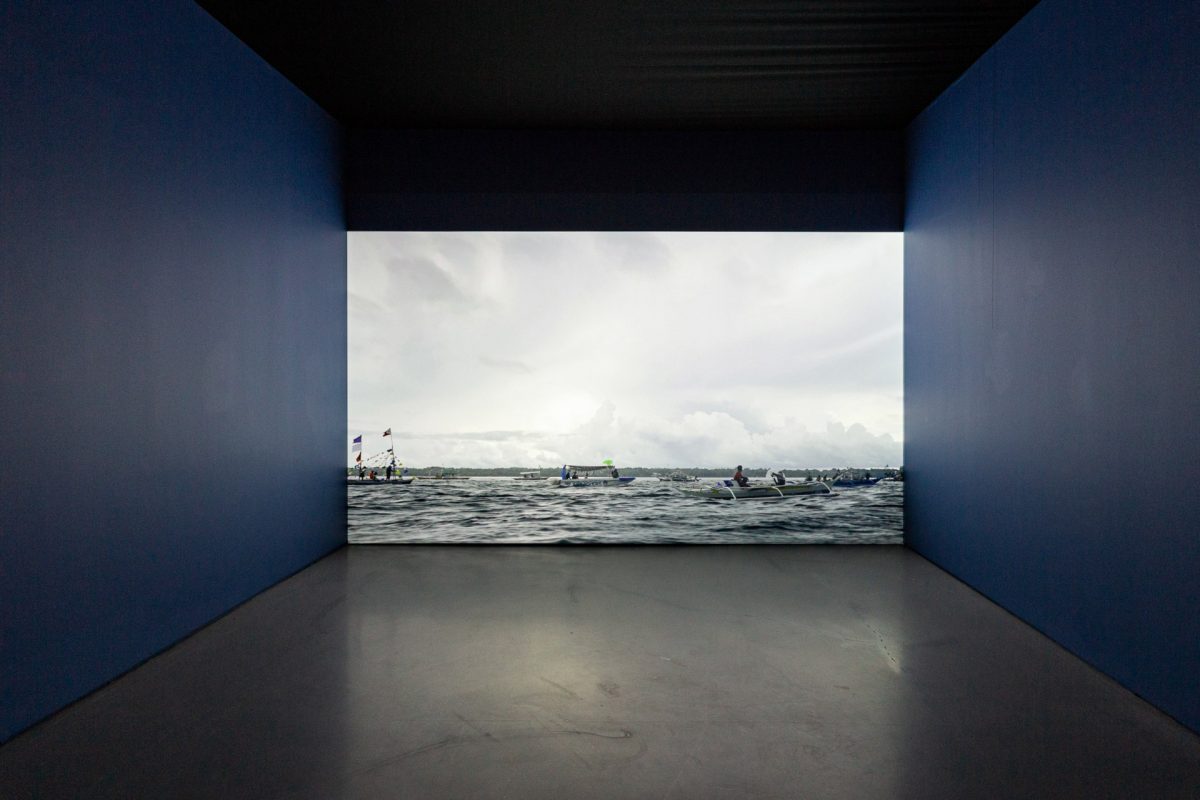
The last but not the least in this schedule is the gallery Anna Laudel, not far from the square Taksim. Any of its exhibitions is a must see, as they present the most topical and interesting art of Istanbul. At present, it displays the personal exposition of Mehmet Sinan Kuran, a true Turkish Bosch.
Photo: press-office

